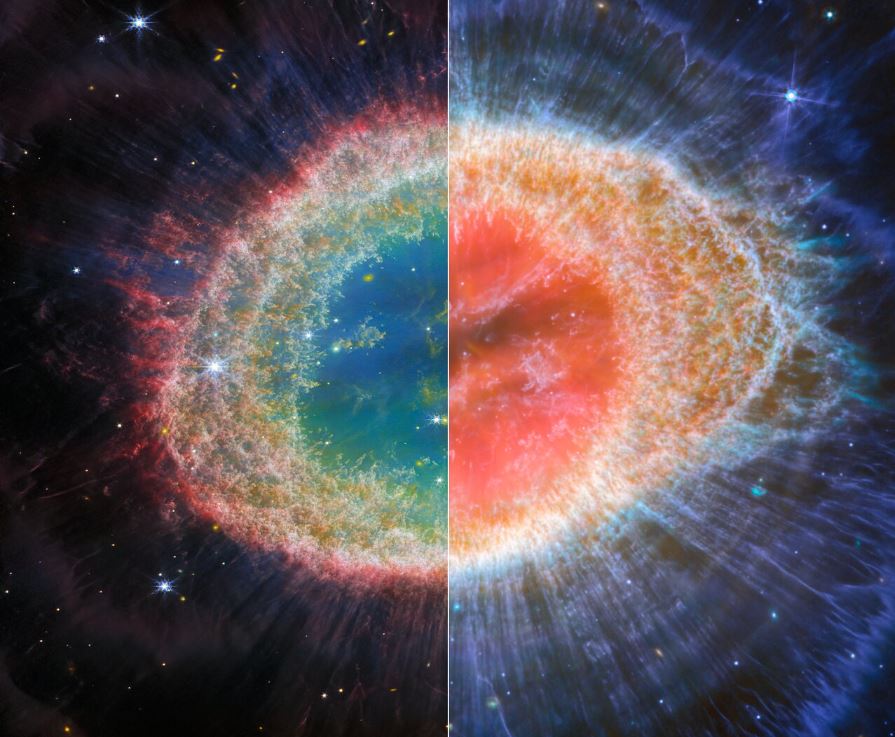Recently, the James Webb Space Telescope (JWST) carried out a new observation of the universe in a cosmic region known as the Ring Nebula; At the end of its stellar cycle, it is a red giant star almost ready to “die”.. A post on James Webb’s official website also includes some unique details in the data collected by the telescope.
The nebula is also known as M57 and NGC 6720 and is located relatively close to Earth, about 2,500 light-years from our planet. JWST astronomers explain that the telescope’s infrared equipment provides high-quality observations; This is the state of the Near Infrared Camera (NIRCam) and Mid Infrared Device (MIRI) devices, which are responsible for providing details of the inner filament and specific details in other parts of the nebula.
First, the cosmic object was discovered in 1779 during a survey by astronomers Antoine Darquier de Pellepoix and Charles Messier, while observing the path of a comet passing through the constellation Lyra. Observations of NGC 6720 youIt’s a cosmic process where it emits ionized gas and will likely continue to do so until it completes the cycle and turns into a white dwarf star.
“The nebula is shaped like a crooked donut. We are looking almost directly at one of the pillars of this structure with a colored barrel extending away from us. The middle of this torus may seem empty, but it is actually filled with a lower-density material that extends both towards and away from us and sinks into the middle cavity of the donut. It forms a shape similar to a placed rugby ball.” in the official statement.
The Ring Nebula and James Webb
The European Space Agency (ESA) said in a statement, The Ring Nebula has about 20,000 “dense globules” rich in molecular hydrogen. But the interior consists of a very hot gas; The ‘mother shell’ emits molecules known as polycyclic aromatic hydrocarbons (PAHs).

The Ring Nebula image shows how similar it is to the shape of a human eye or rugby ball, with hues of blue, green, orange and pink. It is not for nothing that the cosmic object is often cited as one of the most incredible objects science has ever observed.
“Just beyond the outer rim of the main ring, there are about ten concentric arcs. The arcs are thought to result from the interaction of the central star with a low-mass companion orbiting at a distance similar to that between Earth and dwarf planet Pluto. In this way, nebulae like the Ring Nebula, astronomers can learn about the star that created it. Examining the nebula for
Follow the latest astronomical discoveries here Technology World!
Source: Tec Mundo
I’m Blaine Morgan, an experienced journalist and writer with over 8 years of experience in the tech industry. My expertise lies in writing about technology news and trends, covering everything from cutting-edge gadgets to emerging software developments. I’ve written for several leading publications including Gadget Onus where I am an author.












